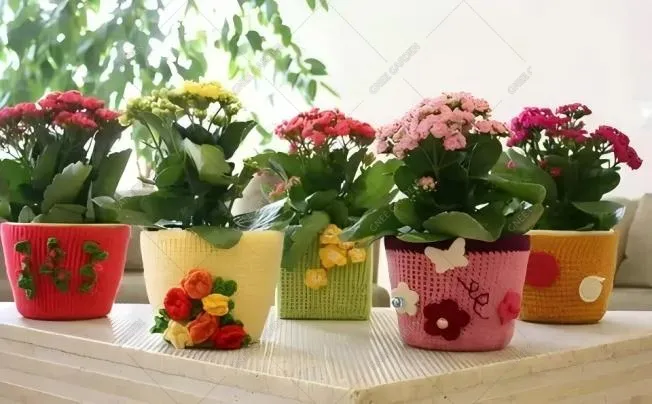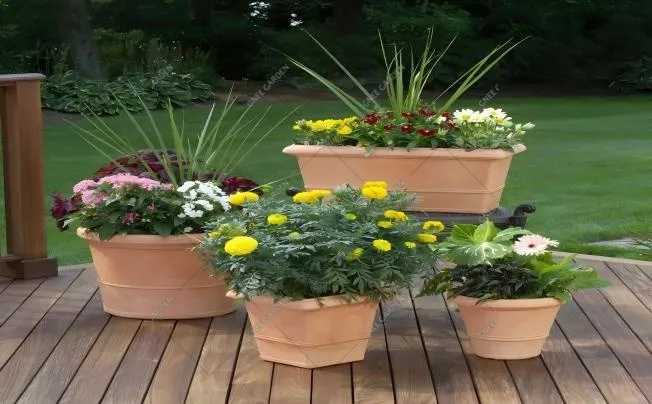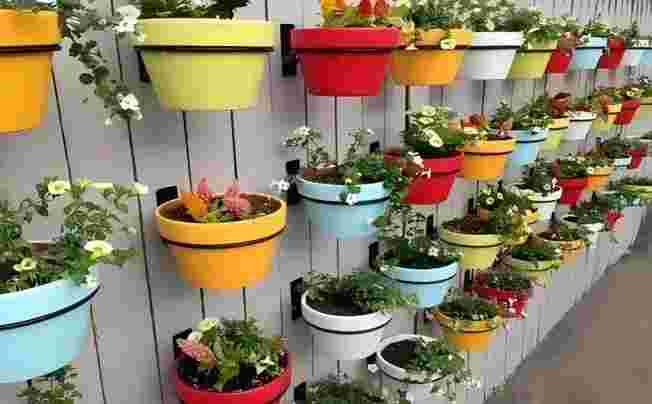What Is The Name Of A Flower Pot?
Flower pots are a peaceful and necessary addition to every area of daily life. Have you ever paused to examine the flowerpot in detail and wondered what it was called?
Common flower pot names
The most widely used term for flowerpots in the English-speaking world is "flowerpot," which is a straightforward and correct combination of the words "flower" and "pot." The term "planter" is comparable to it, referring mostly to planting pots. This word can be used to describe anything, whether it's a planting box in a huge outside garden or a tiny, beautiful inside flower pot.
There are several different names for flowerpots in the Chinese setting. Traditional ceramic flowerpots carry a thousand-year-old pottery history with their warm colours and delicate texture. "Porcelain flowerpots" or "ceramic flowerpots" are the terms we use; "purple clay flowerpots" are used if they are composed of purple clay. Scholars and literati adore them for their distinct air permeability and uncomplicated appearance. They are frequently used to grow priceless flowers like orchids, giving flowers a refined touch. Additionally, there are inexpensive, very breathable clay pots that are burnt with clay. Despite their somewhat rugged appearance, they provide a cosy environment for flowers to establish themselves and thrive. Folk flower growers utilise them extensively, and they are lovingly referred to as "clay pots."
By material, the flower pot family is even more extensive. Because plastic flower pots are lightweight, portable, and affordable, they have a place in contemporary horticulture. Usually referred to as "plastic pots" for short, wooden flower pots have a natural feel to them, as though a piece of the forest has been brought into the house and flowers are allowed to flourish in the cosy wood. We refer to them as "wooden flower pots," "flower boxes," or "wooden barrels" depending on their form and function; stone flower pots are heavy-textured, robust, and long-lasting. There are several varieties, including sandstone and marble flower pots. They are frequently employed to produce beautiful bonsai landscapes. Names like "sandstone retro flower pots" and "marble carved flower pots" are given to them according to their style and type of stone.

Beautiful names for flower pots categorised by design
1. Retro-inspired Flower pots are defined as flower pots that incorporate and draw on historical classic design elements and style features in terms of craftsmanship, materials, and design, resulting in flower pots that are exquisite, traditional, and nostalgic.
Features of the design
With its lovely, smooth lines and harmonious proportions, the shape frequently references traditional flower pot shapes, such as the drum-shaped and hexagonal flower pots of ancient China and the European classical vase-shaped flower pots, among others, which give people a sense of solidity and dignity.
There are many different and rich patterns. The European style is mostly scroll grass patterns, classical mythological characters, etc., which are frequently displayed through carving, painting, decals, and other techniques to boost artistic appeal. In contrast, the Chinese style features traditional patterns like flowers, birds, fish, insects, landscapes, and figures.
Style features
European retro: Inspired by the artistic styles of ancient Greece, Rome, and the Renaissance, the shapes are beautiful and the decorations are intricate; metallic colours like gold and silver are frequently paired with white and beige.
Japanese retro: Pursuing nature, simplicity, and Zen; it frequently uses simple materials, simple shapes, and elegant colours, and it focusses on showing the natural texture and texture of the materials, reflecting the admiration for nature.
Chinese retro: Integrates traditional Chinese cultural elements; the colours are primarily red, yellow, blue, and other traditional colours, reflecting the solemn and elegant oriental temperament.

2. Minimalist, contemporary flower pots
Using the beautiful techniques of contemporary industrial design, geometric plastic flower pots ingeniously blend simple geometric patterns like triangles, squares, and circles to produce a highly customised flower pot style. Some of them are round and soft, giving the area a sense of warmth and agility while allowing green plants like spider plants and green radish to freely spread their branches and leaves. Others have hard lines, displaying a clean modern sense, ideal for matching succulents to create an intriguing miniature desert landscape.
The texture of the cement A simple flower pot's somewhat coarse granular surface gives it a peaceful, rustic vibe that goes well with the minimalist and contemporary interior design aesthetic. With its understated style, this flower container elevates flowers to the forefront of the room. It can add a touch of natural comfort to the hectic life and integrate in well with the surroundings, whether it is set on the study windowsill or the coffee table in the living room.
Regional characteristic flower pots
In China, flower pots have a direct connection to traditional celebrations. The narcissus flower pots that are displayed at homes during the Spring Festival symbolise both good fortune and a reunion with relatives. The sweet-scented osmanthus is fragrant during the Mid-Autumn Festival, and the vintage purple clay osmanthus pots not only highlight the plant's noble elegance but also convey its lovely symbolism of happiness and reunion.
Japanese flower pots aim for harmony with nature and simplicity. For instance, the "Japanese style bowl (わふうばち)" typically consists of natural materials like clay, bamboo, etc. and has a smooth, uncomplicated appearance with minimal embellishment, displaying a subtle beauty. Additionally, there are "water dishes (みずばん)" that are primarily circular and shallow, composed of porcelain or stoneware, and that can be used to grow tiny aquatic or moisture-loving plants like moss and calamus to create a miniature landscape.
Italian terracotta flower pots are referred to as "Terracotta Pots" across Europe. Their colours are soft and warm, and they still have the classic terracotta texture. Along the Mediterranean coast, they are frequently used to grow vibrant geraniums, petunias, and other flowers that adorn balconies and courtyards. Royal splendour abounds in the flower pots in the gardens of the Palace of Versailles in France. An essential component of French garden art, the big stone flower pots are magnificently carved and adorned with gold, exuding dignity and grandeur.

Selected Blogs
-
What customization services are available for metalworking customization?
2024-12-12
-
What Is The Difference Between A Plant Container And A Raised Bed?
2024-04-23
-
Garden Screening & Fence Panels
2024-04-23
-
Gardening pot selection tips
2024-04-17
-
The function and collocation of horticultural fire pot
2024-04-17


